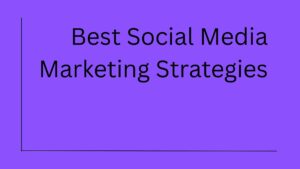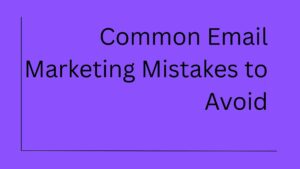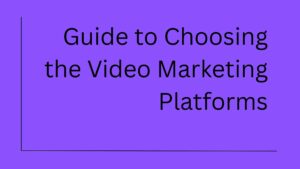Marketers worldwide face increasing pressure to deliver campaigns and digital experiences that not only capture attention but also drive meaningful engagement and conversions. As digital marketing continues to evolve, brands are placing greater emphasis on the user experience (UX) and user interface (UI) design of their marketing touchpoints. These two elements have become critical in determining the success of marketing campaigns, influencing everything from customer acquisition to retention and brand loyalty.
This article takes a closer look at the role UX and UI design play in modern marketing, exploring how a user-centric approach can elevate marketing campaigns to new heights of engagement and conversion effectiveness.
Understanding User Experience (UX) and User Interface (UI) in Marketing
To fully appreciate the importance of UX and UI in marketing, it’s essential first to understand the distinction between the two. While both are closely related, they serve different purposes in creating compelling marketing experiences.
User Experience (UX) in marketing refers to the overall journey and emotional experience a potential customer has when interacting with your brand across all touchpoints. It’s all about how users feel while navigating your website, engaging with your content, or going through your sales funnel, whether the process is seamless, whether they can easily find what they’re looking for, and whether they encounter friction that could cause them to abandon their journey. UX takes into account usability, accessibility, and emotional responses throughout the customer journey.
UX in marketing builds on the following:
- Psychological aspects of customer behavior
- Conversion funnel optimization
- Accessibility across different customer segments
- Emotional responses to brand touchpoints
- Customer journey mapping and optimization
User Interface (UI) in marketing, on the other hand, focuses on the visual and interactive elements of your marketing materials and digital properties. This includes the layout of landing pages, button designs, color schemes, typography, and other visual cues that guide prospects through your marketing funnel. A well-designed UI makes it easy for potential customers to understand your value proposition and take the desired actions.
UI in marketing deals with the following:
- Visual hierarchy and information architecture
- Call-to-action button placement and design
- Navigation structures and user flows
- Brand consistency across touchpoints
- Interactive elements that drive engagement
While UX is concerned with the overall customer journey and experience across all marketing touchpoints, UI deals with the visual and interactive elements that make that journey compelling and conversion-focused. Together, UX and UI create cohesive, effective marketing experiences that prospects appreciate and find easy to navigate toward conversion.
The Symbiotic Relationship Between UX and UI Design in Marketing
The interplay between UX and UI in marketing is much like a high-end retail store experience. The UI is comparable to the visual merchandising of the window displays, product layouts, and signage that catch your eye and guide you through the store. The UX, meanwhile, encompasses the entire shopping experience from how easy it is to find what you’re looking for, to the checkout process, to how the experience makes you feel about the brand.
In marketing design, the relationship of UX and UI manifests in several key ways:
Conversion Funnel Harmony
When UX and UI work together effectively in marketing, they create a seamless path from awareness to conversion. Consider an e-commerce landing page: The UI might present a compelling hero image with a prominent call-to-action button using contrasting colors, while the UX ensures that the entire journey from initial interest to purchase completion follows a logical flow that reduces friction at every step. The UI makes the offer visually appealing and the next steps clear, while the UX ensures the process works in a way that matches customer expectations and motivations.
Information Hierarchy and Persuasion Architecture
The UX team might determine through customer research and predictive analytics that certain benefits need to be highlighted immediately, while supporting details can be revealed progressively. The UI team then implements this hierarchy through visual design elements using typography, color, contrast, and layout to guide prospects’ attention to the most compelling messages first. For instance, on a SaaS landing page, the primary value proposition might be prominently displayed above the fold, while features, testimonials, and pricing details are strategically positioned to support the main conversion goal.
Friction Reduction and Objection Handling
This relationship is particularly crucial in addressing customer concerns and reducing conversion barriers. The UX design anticipates potential customer objections and creates pathways to address them, while the UI design implements these solutions through strategic placement of trust signals and persuasive elements. For example:
- When asking for email signup, the UX design might minimize required fields
- The UI design makes the value exchange clear through compelling copy and visual cues
- Trust elements like security badges or testimonials are positioned where doubt typically occurs
- If customers hesitate, the UX ensures there are multiple paths to re-engage them
Personalization and Segmentation
The symbiotic relationship extends to creating relevant experiences for different customer segments:
- UX design identifies different customer personas and creates appropriate journey pathways
- UI design implements these pathways with personalized messaging, relevant imagery, and targeted offers
- Together, they ensure that different customer segments receive experiences tailored to their needs and preferences
Multi-Channel Consistency and Attribution
The relationship between UX and UI is particularly evident in how marketing experiences connect across channels:
- UX design ensures consistent messaging and experience quality across email, social media, website, and ads
- UI design creates recognizable visual patterns and brand elements that create cohesion
- Together, they enable seamless transitions between marketing touchpoints and clear attribution of customer actions
Importance of UX and UI Design in Marketing Success
As businesses increasingly rely on digital marketing to drive growth, ensuring that marketing experiences are both compelling and user-friendly has become a top priority. Here are some key reasons why UX and UI design are essential in modern marketing:
Enhanced Conversion Rates and Campaign Performance
One of the most obvious benefits of good UX and UI design in marketing is the improvement in conversion rates. When marketing materials and digital experiences are designed with the user in mind, they become more persuasive and effective at driving desired actions. Intuitive navigation, clear value propositions, and friction-free conversion processes help prospects move smoothly through your marketing funnel.
By eliminating confusion and streamlining the customer journey, for example, an email marketing campaign template with strong UX and UI design can significantly improve key performance metrics like click-through rates, conversion rates, and return on ad spend. This leads to more efficient marketing spend and better overall campaign ROI.
Customer Acquisition and Retention
At the heart of any successful marketing campaign is the ability to attract and retain customers. Marketing experiences that provide seamless, engaging interactions encourage prospects to convert and existing customers to remain loyal. When users feel that your marketing communications are helpful, relevant, and easy to interact with, they are more likely to trust your brand and become long-term customers.
Positive marketing experiences often lead to organic referrals and social sharing, amplifying your marketing reach through word-of-mouth recommendations and user-generated content.
Reduced Customer Acquisition Costs
Another significant benefit of well-designed marketing experiences is that they improve the efficiency of your marketing spend. When your landing pages, email campaigns, and digital touchpoints are optimized for user experience, you achieve higher conversion rates with the same amount of traffic. This effectively reduces your cost per acquisition and allows you to scale your marketing efforts more profitably.
By eliminating friction points that cause prospects to abandon their journey, you can get more value from your existing marketing budget and reinvest savings into expanding your reach or testing new channels.
Competitive Differentiation
In crowded markets where prospects are bombarded with marketing messages, exceptional UX and UI design can be a powerful differentiator. Marketing experiences that are more intuitive, visually appealing, and user-friendly will stand out from competitors who neglect these elements. When businesses prioritize UX and UI design in their marketing, they create touchpoints that not only communicate their value proposition effectively but also demonstrate their commitment to customer experience.
The ability to provide superior marketing experiences gives companies a distinct competitive advantage, making their brand more memorable and positioning them as the preferred choice in their market.
Brand Perception and Trust Building
Marketing touchpoints often serve as the first impression potential customers have of your brand. UX and UI design play a pivotal role in shaping brand perception and building trust with prospects. Professional, well-designed marketing materials signal credibility and attention to detail, while poor design can undermine trust and credibility.
A user-centric approach to marketing design demonstrates that your brand understands and values customer needs, which helps build emotional connections and brand affinity. Whether it’s through a beautifully designed email campaign, an intuitive website navigation, or a seamless checkout process, strong design creates positive brand associations that influence purchasing decisions.
Data-Driven Optimization and Personalization
Modern email marketing relies heavily on data and testing to optimize performance. UX and UI design provide the foundation for effective A/B testing and conversion rate optimization. By creating marketing experiences with clear user flows and measurable interaction points, marketers can gather valuable data about customer behavior and preferences.
This data-driven approach enables continuous improvement of marketing performance through iterative design changes. Understanding how users interact with different design elements helps marketers optimize everything from email subject lines, writing marketing emails, to landing page layouts for maximum impact.
Customer Journey Orchestration
Marketing today is about creating cohesive experiences across multiple touchpoints and channels. UX and UI design are essential for orchestrating seamless customer journeys that guide prospects from initial awareness through consideration to conversion and retention.
By mapping out the customer journey and designing each touchpoint with both UX and UI principles in mind, marketers can create experiences that feel connected and purposeful. This holistic approach ensures that each interaction builds upon the previous one, creating momentum toward conversion.
Mobile and Cross-Device Optimization
With the majority of digital interactions happening on mobile devices, responsive UX and UI design have become critical for marketing success. Marketing experiences must work seamlessly across devices and screen sizes to capture and convert today’s multi-device customers because many are using multiple devices before making purchase.
Strong UX design ensures that the customer journey remains coherent whether a prospect discovers your brand on mobile, researches on desktop, or converts on tablet. UI design ensures that your marketing materials are visually appealing and functionally effective on every device.
Importance of Balancing UX/UI and Digital Marketing
User-Centric Marketing and Customer Empathy
A core principle of both UX and UI design is putting the customer first. User-centric marketing design requires marketers to empathize with the challenges prospects face and understand their motivations, fears, and desires. By stepping into the shoes of the customer, designers and marketers can create experiences that are both practical and emotionally resonant.
This empathetic approach helps establish stronger connections between your brand and potential customers, resulting in more effective marketing communications and higher conversion rates. Customers who feel that your marketing has been designed with their needs in mind are more likely to trust your brand and choose your solution over competitors.
Research-Driven Design Decisions
Effective UX and UI design in marketing is built on solid customer research. This includes:
- Customer interviews and surveys to understand pain points and motivations
- User testing of marketing materials and conversion flows
- Analytics analysis to identify friction points and optimization opportunities
- A/B testing of different design approaches and messaging strategies
This research ensures that marketing design decisions are based on customer insights rather than assumptions, leading to more effective campaigns and better results.
Iterative Improvement and Marketing Innovation
Marketing is an ongoing process, and continuous improvement is key to maintaining competitive advantage in rapidly evolving markets. UX and UI design are not static; they require constant testing and iteration based on customer feedback and performance data.
Regular optimization based on user behavior analytics ensures that marketing experiences evolve alongside changing customer expectations and market conditions. This culture of continuous improvement not only helps maintain conversion performance but also keeps your marketing innovative and competitive.
Testing and Optimization Framework
Successful marketing organizations implement systematic approaches to UX/UI testing:
- Continuous A/B testing of design elements and user flows
- Multivariate testing of complex page layouts and content combinations
- Heat mapping and user session recording to understand user behavior
- Conversion funnel analysis to identify drop-off points and optimization opportunities
- Customer feedback loops to gather qualitative insights about user experience
Conclusion
The role of UX and UI design in marketing continues to grow in importance as businesses recognize their impact on campaign performance and customer acquisition. A thoughtful, user-centric approach to marketing design can enhance conversion rates, improve customer experience, reduce acquisition costs, and create sustainable competitive advantages. More importantly, it ensures that marketing efforts align with customer needs and preferences, empowering organizations to build stronger relationships with their target audience.
As businesses continue to navigate an increasingly digital and competitive landscape, investing in UX and UI design for marketing will remain a crucial strategy for companies looking to maximize their marketing ROI. Whether it’s optimizing landing pages, improving email campaign performance, or creating more engaging social media experiences, a focus on user experience and interface design is essential for marketing that truly connects with customers.
In the end, creating great marketing experiences isn’t just about good design, it’s about creating touchpoints that customers genuinely appreciate and find valuable, making your marketing a competitive asset rather than just another expense. When your marketing experiences are designed with both UX and UI principles in mind, they become powerful tools for building relationships, driving conversions, and growing your business.






3 thoughts on “Role of User Experience (UX) and User Interface (UI) in Marketing”
I have not thought the UX has a huge role while designing software. What else can you expect coming from a tech blogger? Thanks!
What i don’t understood is in reality how you’re now not actually much more smartly-favored about both UX & UI design than you may be now. You are very intelligent. You realize therefore considerably in terms of this matter, produced me in my view believe it from a lot of varied angles. At all times maintain it up!
Thank you for taking the time to share your thoughts. Your feedback on the quality of the content is greatly appreciated. While reading the article I get all details of UX and UI, simplifying the explanation could enhance its accessibility to a broader audience. I have enjoyed reading several of your blog posts and am continually impressed by your dedication to creating insightful and engaging content. Your commitment to producing valuable material is evident. Please continue to share your knowledge and expertise with us.